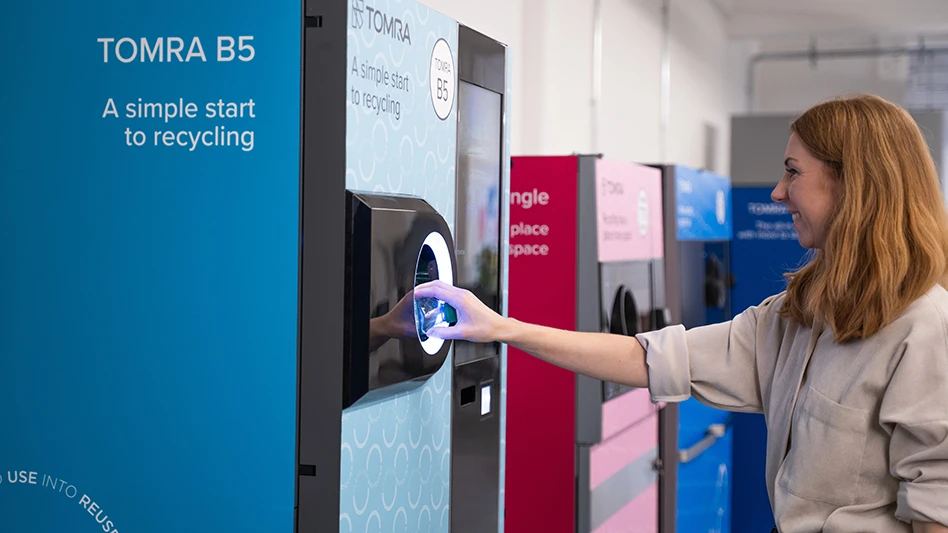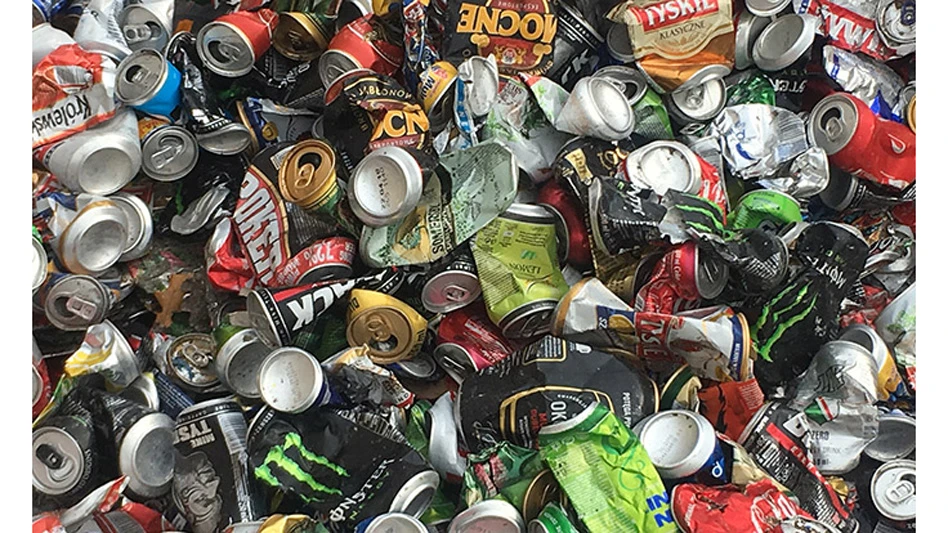
The European Union (EU) has long been at the forefront of environmental policy, with recycling serving as a cornerstone of its sustainability efforts.
In recent years, the EU has introduced a series of regulations aimed at transforming the recycling landscape, influencing everything from waste collection and sorting to trade and market competitiveness. Policies targeting plastic waste reduction are driving change, affecting the quality and economics of plastic recycling across Europe and beyond.
Transformative regulations
One of the key regulations driving change is the Single-Use Plastics Directive (SUPD), which came into force in July 2021. This directive specifically targets plastic waste reduction, particularly focusing on plastic bottles. It mandates the collection of a certain percentage of plastic beverage bottles, which also must contain a minimum amount of recycled content. For example, PET, or polyethylene terephthalate, beverage bottles must have at least 25 percent recycled content as of Jan. 1.
While this regulation seeks to drive demand for recycled plastic, it also has created uncertainties given the unclear enforcement mechanisms. Many EU member states have yet to implement strict penalties, leaving businesses unsure how compliance will be monitored and enforced.
Another initiative expected to improve recycling efficiency is implementing deposit return schemes (DRS) under the SUPD. These systems, which require consumers to pay a small deposit on beverage containers that is refunded upon return, have proven successful in increasing collection rates and improving the quality of recyclables. Countries such as Germany and the Netherlands have well-established DRS that yield positive results.
While new DRS have been introduced and more are planned in the next couple years, broader adoption across Europe could help address supply chain constraints for PET, in particular.
Another significant piece of legislation is the Packaging and Packaging Waste Regulation (PPWR), which came into effect this year.
Unlike the SUPD, which focuses on plastics, the PPWR extends to all packaging materials. This regulation enforces ambitious recyclability and reuse targets, requiring all packaging to be recyclable by 2030. The goal is to reduce waste and encourage companies to rethink their approaches to product packaging.
A major challenge has been a lack of clarity around methodologies and definitions, which has left businesses struggling to understand exactly how to comply. While the European Commission has stated it will publish some of these methodologies by the end of 2026, it leaves the industry without those specific requirements and creates the potential for significant change in operating modes once announced.
The impact of the EU’s regulations extends beyond consumer packaging.
The proposed End-of-Life Vehicles (ELV) Regulation is set to introduce mandates regarding using recycled content in the automotive sector. This would require manufacturers to use more recycled materials in vehicle production. Specifically, 15 percent of that target must be met using postconsumer plastic recycled from ELVs or scrap generated by vehicle workshops and preconsumer scrap from vehicle production. This regulation is expected to increase demand for recycled polymers overall. Even before full enforcement, this shift already has been influencing material prices and supply chains.

Economic implications
As these regulations reshape the recycling industry, the economic implications are becoming increasingly apparent. The cost of compliance in Europe is significantly higher compared with other regions, such as Asia and non-EU countries. European recyclers face steep operational expenses, including costly additional sorting processes.
In contrast, non-EU producers often can supply virgin plastic or recycled materials at lower prices, and some recycled resin suppliers are not meeting all compliance requirements, both of which create a competitive disadvantage for European businesses.
In some cases, individual countries within the EU have introduced additional measures to support recycling. Prior to the SUPD, the United Kingdom implemented a Plastics Packaging Tax, charging approximately 218 pounds sterling ($292) per metric ton of plastic packaging that does not meet recycled content thresholds. However, many businesses have opted to simply pay the tax rather than increase their use of recycled materials in light of the delta between recycled and virgin prices, making it unfavorable to use recycled, thereby raising concerns about the effectiveness of such measures.
Spain has taken a more hard-hitting approach, introducing a 450-euros-per-metric-ton ($508) plastics tax, making virgin plastic significantly less attractive. Italy initially planned a similar tax but delayed its implementation to July 2026 given economic concerns, highlighting the financial challenges associated with regulatory changes.
The effects of these regulations also are being felt at the market level.
In Poland, for example, the price of recycled PET (rPET) bales surged to nearly 900 euros ($1,015) per metric ton in March 2024 owing to supply constraints. This increase highlights the volatility of the recycled plastics market and the difficulty businesses face consistently securing feedstocks at competitive prices. Speculation and market uncertainty further contribute to price instability, making it difficult to plan for long-term investments in recycling infrastructure.
Enforcement concerns & other challenges
Despite the EU’s efforts to promote a circular economy for plastic, several challenges still remain. One of the biggest concerns is enforcement. While the regulations establish clear goals, no penalties or auditing mechanisms universally are applied to ensure compliance. Without stricter regulatory oversight, businesses could continue to prioritize using lower-cost virgin plastics over higher-priced recycled alternatives.
The struggle to balance economic sustainability with regulatory goals is not limited to Europe.
In Australia, the recycling industry has faced similar financial difficulties, with many companies questioning whether the sector can remain viable without adjustments to landfill and incineration fees. Policymakers have debated whether such fees should be adjusted based on market conditions to provide greater incentives for recycling. This underscores the broader global dilemma on how to create a financial framework that supports long-term investment in recycling infrastructure without placing excessive burdens on businesses.
One potential solution being debated is whether to tax virgin plastic more heavily instead of subsidizing recyclers. Some policymakers argue that increasing the cost of virgin plastic would create a stronger financial incentive for businesses to use recycled materials. However, examples of plastic taxes that have been introduced in the U.K. and Spain have shown mixed results as companies face the dilemma of weighing finances against sustainability. In current market conditions, the financial incentive to use more circular plastic alternatives in place of virgin plastic is not present.
As the recycling industry adapts to these regulations, the plastic value chain is forced to rethink its approach to more sustainable solutions. Many businesses are exploring ways to make recycling financially sustainable by improving efficiency, investing in better sorting technologies and securing more stable supply chains. However, without clear financial incentives and enforcement of these regulations to create a level playing field, businesses could continue to focus on using virgin plastic rather than making the necessary investments in promoting circular economy solutions.

Balancing environmental goals & economic realities
The future of recycling in Europe will depend on how these policies evolve and whether additional actions are taken to address the economic challenges for the plastics value chain.
If regulations are clarified, enforcement mechanisms are strengthened and financial incentives are properly aligned, the EU’s push for a circular economy could serve as a model for the rest of the world. However, if businesses continue to face uncertainty and high costs for recycled plastic, the risk that recycling targets will be missed and reliance on virgin plastics will persist increases.
Ultimately, the EU’s recycling policies are reshaping European markets while also influencing global supply chains and industry standards. As other regions of the world look to implement their own sustainability initiatives, they likely will draw lessons—both positive and negative—from Europe’s experience. The success of these regulations will depend on achieving a balance between ambitious environmental goals and practical economic realities.

Explore the June 2025 Issue
Check out more from this issue and find your next story to read.
Latest from Recycling Today
- ReMA urges open intra-North American scrap trade
- Axium awarded by regional organization
- China to introduce steel export quotas
- Thyssenkrupp idles capacity in Europe
- Phoenix Technologies closes Ohio rPET facility
- EPA selects 2 governments in Pennsylvania to receive recycling, waste grants
- NWRA Florida Chapter announces 2025 Legislative Champion Awards
- Goldman Sachs Research: Copper prices to decline in 2026





